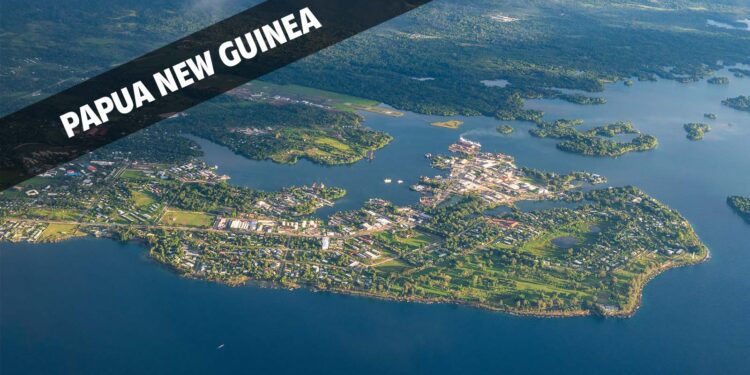Transiting Papua New Guinea – Operational Tips for Bizav

The independent state of Papua New Guinea is located in the southwestern Pacific Ocean and shares an island with the Indonesian province of West Papua. While Port Moresby (AYPY) is the primary destination for most general aviation (GA) operations to Papua, the country also has many domestic airfields available. Operators heading to Papua need to be aware of permit lead times and should plan in advance for all fuel uplifts and aircraft services.
The following is an overview of what you need to know:
1. There’s only one airport of entry
Port Moresby (AYPY) is Papua’s only airport of entry (AOE). All other airports are domestic only. AYPY is a 24-hour airport with full services available, including credit with arrangements made in advance.
2. Papua permit requirements
Landing permits are needed for all private non-revenue and charter (non-scheduled commercial) operations to and within the country. Overflight permits are required anytime you’re overflying the landmass, waters, or any Papua flight information regions (FIRs). These permits are needed for all flight operations, including air ambulance movements.
3. Permit lead times
It’s recommended that landing and overflight permits be requested five to seven business days in advance. If you’re requesting a permit for domestic travel within Papua, 72 hours lead time is needed. Note that permit processing usually involves additional lead time during peak season – September to December. For permit revisions, plan on 72 hours lead time. Short notice permit requests are possible, at the discretion of the Civil Aviation Authority (CAA) and on a case by case basis. Note that Papua is strict on permit lead times. CAA is closed during public holidays. Always confirm CAA closure times, in advance, with your trip support provider or ground handler.
4. Permit documentation
Aircraft and crew documentation is not necessary for overflight and most landing permit requests. However, in the case of aircraft operating on experimental certificates, it’s necessary to provide airworthiness and registration certificates, and a worldwide insurance certificate, with any landing permit request.
5. Cabotage considerations
Cabotage regulations are strictly enforced in Papua in the case of charter flights. No passengers, other than those who arrived in Papua onboard the aircraft, may be picked up in-country for either domestic or international flight legs. Drop-off of passengers at multiple destinations, however, is allowed.
6. Aircraft disinsection requirements
For all entries into Papua the aircraft cabin must be disinsected prior to landing. An insecticide, approved by the World Health Organization (WHO), must be used on approach at top of descent. The captain must indicate, on the general declaration form, the serial number of the insecticide can and provide, upon arrival, the empty can to the quarantine officer for inspection. In addition, a pre-flight and top of descent disinsection certificate must be completed and signed by the captain.
7. Hotels and local transport
Hotel accommodation options are somewhat limited, both at Port Moresby and smaller centers in Papua. While you’ll find 4-star crew hotel options at Port Moresby, there are few large international chain hotels available. While some 4-star hotels can be found outside of Port Moresby, most of the outlying accommodations are 3-star. For local travel, prepaid transport (car with driver) is recommended. Rental vehicles should be avoided, unless you are familiar with the area, and public taxis should be vetted by either your ground handler or hotel.
8. Security and safety
Due to security concerns it’s recommended that operators obtain security reports – for the country, airport and city – prior to traveling to Papua. Be mindful of the unique and highly poisonous hooded Pitohui bird native to Papua. This beautiful black and orange creature – one of the world’s only poisonous birds – carries a toxin in both its body fluids and feathers. This batrachotoxin, the same toxin found in local poison dart frogs, can cause muscle paralysis, cardiac arrest and death.
9. Additional operational considerations
During peak season – September to December – there may be aircraft parking issues to consider at AYPY. Fuel uplifts should always be arranged in advance. A fuel release should be transmitted to your ground handler, and the local fuel provider, at least 48 hours in advance. It’s important to note that fuel trucks here have a low flow rate and tank capacity. Aircraft requiring a large-volume fuel uplift should obtain it via hydrant. The fuel depot is found opposite the old control tower. There are five jet hydrant dispensers and one jet hydrant cart that serves both domestic and international terminals. There are three tanker trucks that serve the GA area.
Conclusion
When operating to Papua be particularly mindful of permit procedures of domestic airports as well as cabotage restrictions, in the case of charter. Security should also be taken into account, particularly when operating to smaller and more remote destinations in country.
Questions?
If you have any questions about this article or would like assistance in planning your next trip to Papua New Guinea, contact Louis Smyth at louissmyth@univ-wea.com.



